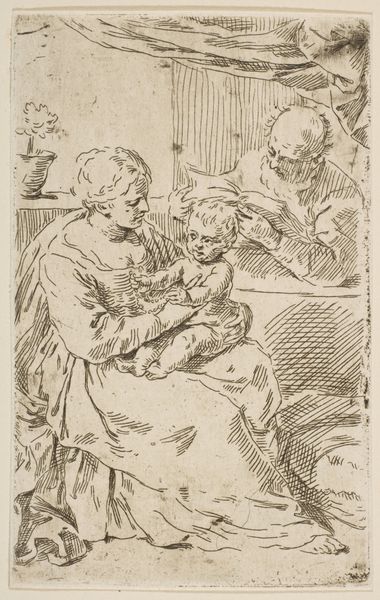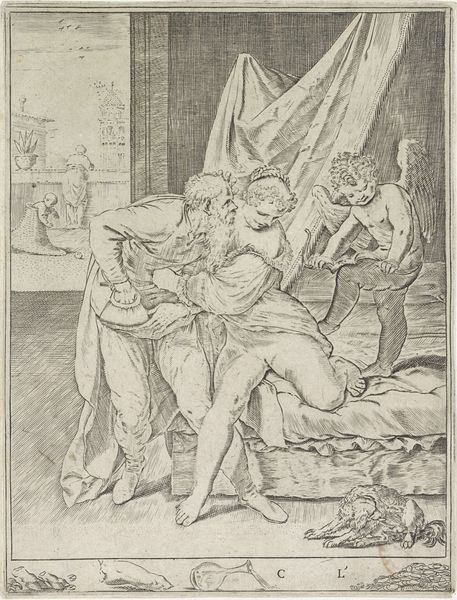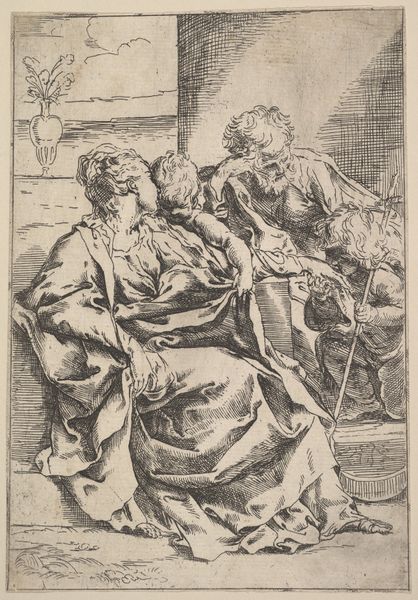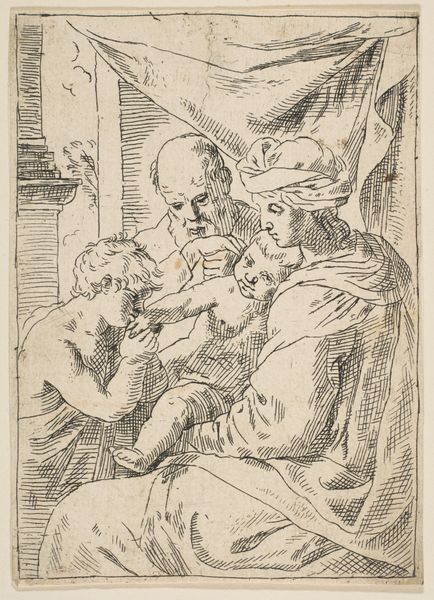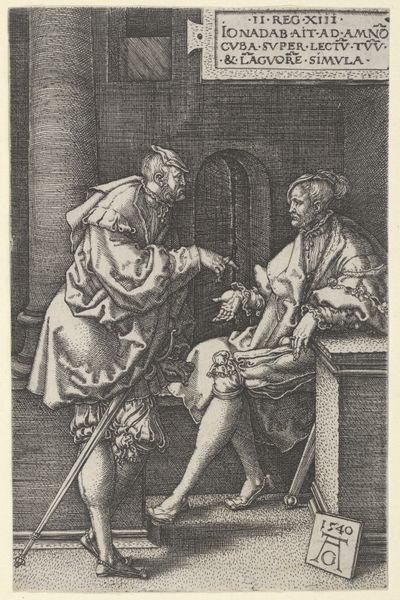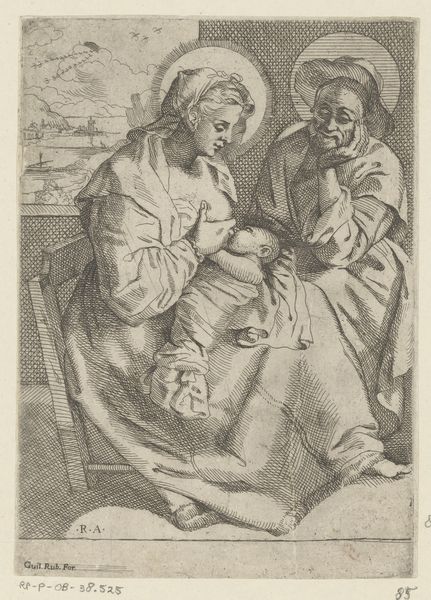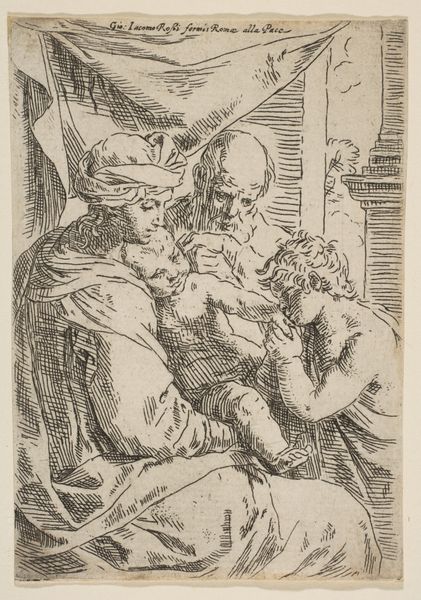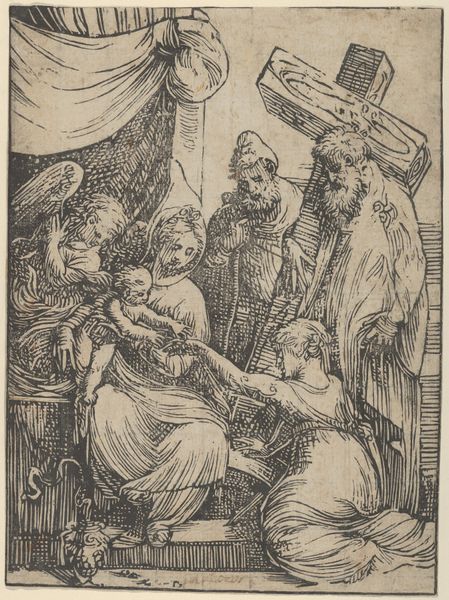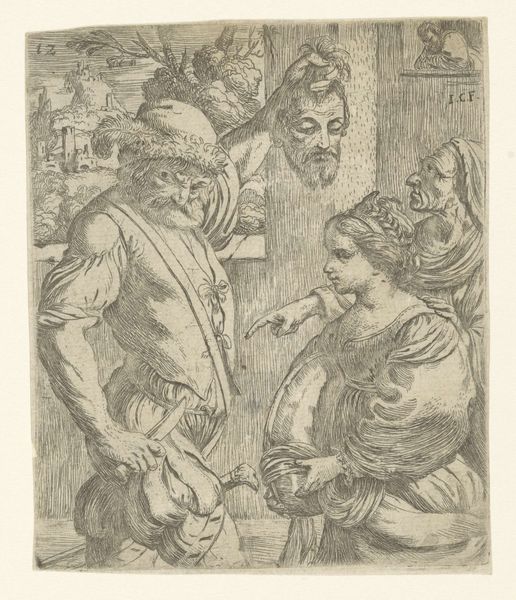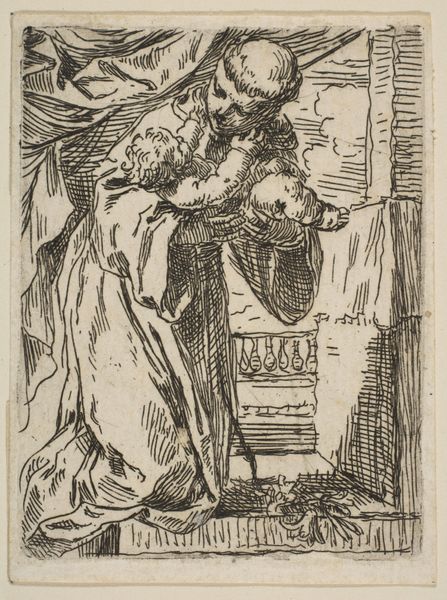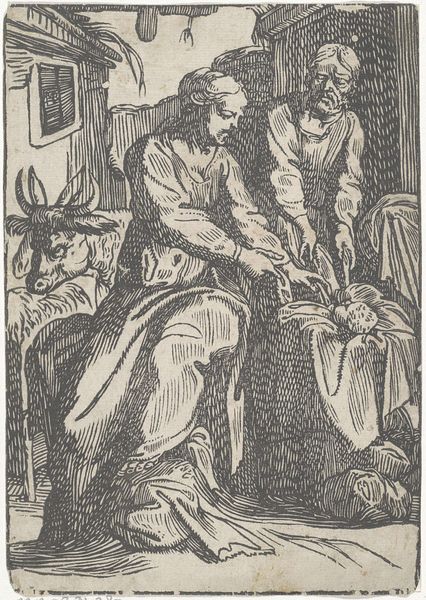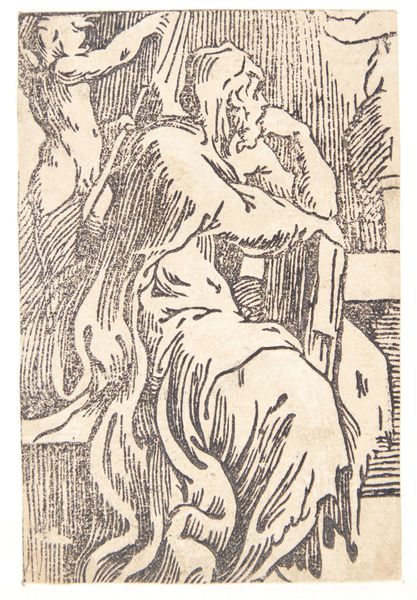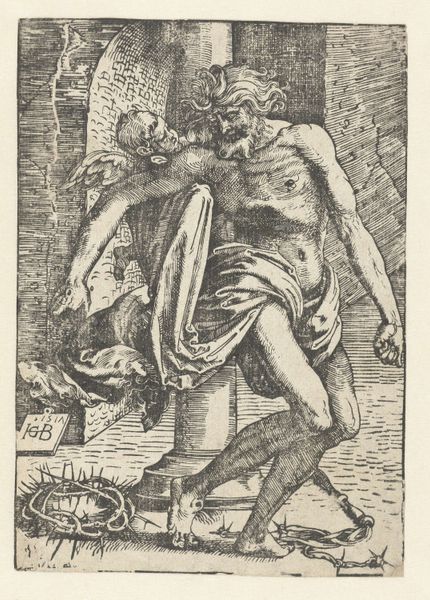
Holy Family with Saint John the Baptist, copy in reverse 1635 - 1647
0:00
0:00
drawing, print, engraving
#
portrait
#
drawing
#
ink drawing
#
baroque
# print
#
pen sketch
#
figuration
#
history-painting
#
engraving
Dimensions: Sheet (Trimmed): 5 1/8 × 3 1/4 in. (13 × 8.3 cm)
Copyright: Public Domain
Curator: Here we have "Holy Family with Saint John the Baptist, copy in reverse," an engraving by Simone Cantarini, dating from sometime between 1635 and 1647. Editor: It feels so raw, like a quickly jotted-down idea. I am immediately drawn to the linear quality. The hurriedness of the lines is balanced by a tenderness in the faces that I don't think I'd expected. Curator: This work certainly captures the Baroque interest in emotion. Cantarini was deeply influenced by Guido Reni. You see the idealization of form but also a new emphasis on naturalism and capturing intimate, familial moments. These depictions become important not only within art but reflect socio-political ideals as well. Editor: I wonder about the material process here. The hatching and cross-hatching; it must have taken great control to achieve these subtle tonal shifts. And consider how many of these could be printed, distributed and sold? How would the art market engage with a print like this versus a singular painted panel? Curator: That's an excellent point. Printmaking allowed for wider dissemination of imagery, reinforcing both artistic styles and religious narratives within a broader audience. Editor: Yes! I'm thinking of the physical labor. The act of repetition would give this imagery different status within both fine art and what might be perceived as artisanal. Curator: Right, engraving straddled those boundaries. The prints also catered to the rising merchant class, fostering a market where art functioned differently. How would viewers in different social strata access or consume artwork? It begs questions about its intended audience. Editor: Seeing the evidence of craft so plainly, the lines of labor etched so deeply, really brings this devotional subject to life for me. The roughness is almost as interesting as the supposed smoothness. Curator: I agree. It highlights the complex social fabric woven through artistic production. Editor: Well, seeing it this way has helped me appreciate the relationship between artwork and work of art. Curator: It helps us appreciate the role that images played and continue to play within culture.
Comments
No comments
Be the first to comment and join the conversation on the ultimate creative platform.
